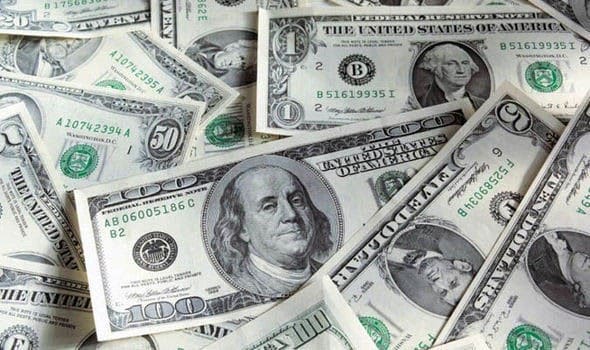
The U.S. dollar declined to a six-week low against major peers
On Monday, April 19, the U.S. dollar declined to a six-week low against major peers. Moreover, Treasury yields hit their lowest in five weeks. The fall started after the U.S. Federal Reserve reported that any spike in inflation was likely to be temporary.
The greenback was also held down by improved risk sentiment amid a rally in global stocks to record highs.
The largest cryptocurrency in the world, Bitcoin, stabilized after losses from Sunday. On April 18, the digital currency declined as much as 14% and traded at $51,541.
The U.S. dollar index, which measures it against six other currencies, dropped to 91.079. It was traded close to last week’s low of 91.484, a level unseen since March 18.
The dollar’s weakness was pronounced across the board on Monday. The greenback reached multi-week lows against major peers in the G10 group of currencies, such as the Japanese yen, the Swiss franc, the Australian dollar and the New Zealand dollar, and the euro.
Additionally, the 10-year Treasury yield fell as low as 1.5280% last week from 1.7760% at the end of last month, its highest in over a year.
The euro rose over $1.20 for the first time in over six weeks, reaching a high of $1.2048 by midday in London. The European Central Bank meets this week with internal divisions over the pace of bond buying, extended coronavirus lockdowns, and potential setbacks to the EU recovery fund forming the backdrop.
Fed Governor Christopher Waller announced that a rise in inflation is likely to be temporary, repeating comments from other Fed officials, including Chair Jerome Powell, over the past week.
The British sterling increased to a two-week high against the dollar
Moreover, the British sterling increased to a two-week high against the dollar on Monday ahead of a data-heavy week. Remarkably, it is expected to provide more evidence that Britain’s economy is recovering from its deepest recession in 300 years.
Against a weakening dollar, the sterling increased 0.3% to $1.3888 at 0835, its highest level since April 6. It fell by 0.1% against the euro at traded at 86.63 pence.
MSCI’s emerging market currency index reached its highest level in a month, trading 0.2% higher on the day. The Chinese yuan, which forms about 30% of the index’s weight, strengthened to its highest since March 23. The currency increased by 0.4% on the day and traded at 6.5031 per dollar.
The dominant cryptocurrency stabilized about $57,000 after dipping on Sunday.
Despite recent weakness, the world’s largest cryptocurrency remains up 97% in 2021, after more than quadrupling in 2020.


